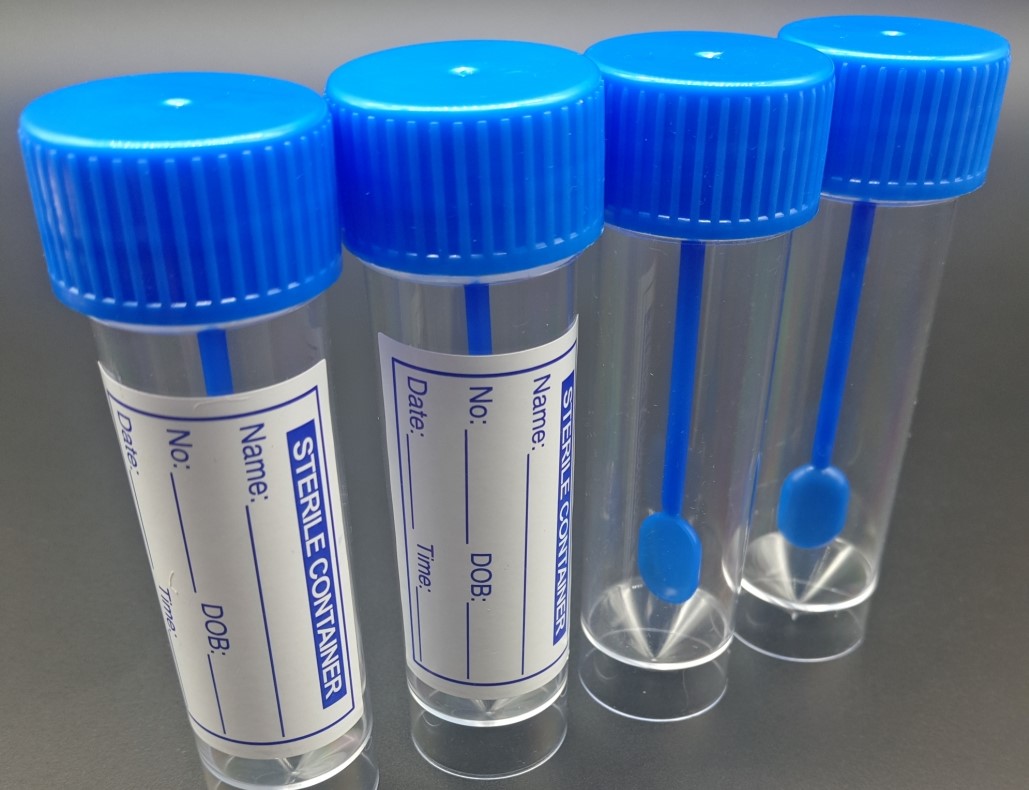
Stool analysis: what it is and when to perform this test
What is a stool analysis? Faeces are the excrement produced by the intestine, composed of 70%-85% water and the rest of food residues
The stool test consists of analysing a stool sample collected from the patient and is used to discover pathologies and dysfunctions of the intestinal system, including the two major exocrine glands, liver and pancreas.
What the macroscopic stool test reveals
The macroscopic stool test consists of detecting the quantity, colour, fat and pH of stools, as well as checking for the presence of blood and muscle fibres.
Quantity: under normal conditions, the quantity of faeces excreted by an adult in 24 hours is between 100 and 250 grams; for a child the quantity is about 120-150 g/24 hours.
An increase can be due to a diet rich in fibre (vegetarian diet), accelerated intestinal transit caused by intestinal neuromuscular abnormalities, malabsorption, diseases that cause loss of fluid with the faeces (gastroenteritis) or chronic pancreatic insufficiency.
Colour: the stools of adults are brown, whereas those of infants are yellow. Yellow, in adults, is a sign of pancreatic insufficiency; white is a sign of biliary insufficiency. Blackish stools occur in case of melena and intake of iron, charcoal, spinach or chocolate.
pH: the pH of stools is neutral or slightly acidic. An acidic pH indicates fermentation processes due to pancreatic insufficiency or the introduction of foods that increase fermentation; an alkaline pH is caused by putrefaction processes of poorly digested proteins.
Fat: normal values in adults are up to 6 grams in 24 hours and in children up to 2 grams. An increase in fat in the faeces (steatorrhoea) indicates disturbances in the digestion of fats, which are eliminated without being absorbed, as occurs for example in pancreatic or hepatobiliary insufficiency or in diarrhoea.
Muscle fibres: the significant presence of undigested muscle fibres in the faeces (creatorrhoea) occurs in cases of diarrhoea and, above all, pancreatic insufficiency.
Blood: Faecal occult blood tests (FOBT) are performed when bleeding along the digestive tract is suspected.
The test is positive if more than 5 ml is found in 24 hours (under normal conditions, about 2 ml of blood is excreted with the faeces per day).
In contrast, the presence of bright red blood visible to the naked eye (haematochezia) generally indicates bleeding in the last intestinal tract or internal or external haemorrhoids.
What the microscopic stool test reveals
The microscopic test of stools is used to detect the presence of bacteria, parasites, fungi, viruses and leucocytes.
Bacteria can be round (coccus), elongated (bacilli) or spiral-shaped (campylobacter) and are sought in stools with a test called coproculture (stool culture test).
The most sought after are: Campylobacter, Clostridium, Escherichia coli, Salmonellae, Shigellae, Staphylococcus, Vibrio, Yersinia.
Parasites that can infest the intestine are: Ancylostoma duodenale, Ascaris lumbricoides, Entameba histolyca, Giardia lamblia, Hymenolepis nana, Enterobius Vermicularis (Ossiurus, the typical worm of children), Tenia saginata, Tenia solium (the so-called ‘tapeworm’), Trichuris trichiura (Trichocephalus).
The scotch-test (application of a piece of transparent scotch tape to the anus and subsequent microscopic examination for parasite eggs) is generally carried out to search for their presence, or an examination of the faeces after ‘enrichment’ can be carried out to highlight the eggs better under the microscope.
Among the mycetes, Candida is searched for, while the most common virus is Rotavirus, which causes major but not dangerous diarrhoea in adults.
Read Also
Emergency Live Even More…Live: Download The New Free App Of Your Newspaper For IOS And Android
Faecaloma And Intestinal Obstruction: When To Call The Doctor
Black Stools And Melena: Causes And Treatment In Adults And Infants
Pinworms Infestation: How To Treat A Paediatric Patient With Enterobiasis (Oxyuriasis)
Intestinal Infections: How Is Dientamoeba Fragilis Infection Contracted?
Gastrointestinal Disorders Caused By NSAIDs: What They Are, What Problems They Cause
Intestinal Virus: What To Eat And How To Treat Gastroenteritis
Train With A Mannequin Which Vomits Green Slime!
Pediatric Airway Obstruction Manoeuvre In Case Of Vomit Or Liquids: Yes Or No?
Gastroenteritis: What Is It And How Is Rotavirus Infection Contracted?
Recognising The Different Types Of Vomit According To Colour
Irritable Bowel Syndrome (IBS): A Benign Condition To Keep Under Control
Colitis And Irritable Bowel Syndrome: What Is The Difference And How To Distinguish Between Them?
Irritable Bowel Syndrome: The Symptoms It Can Manifest Itself With
Experts Call For Changes To The Way IBS (Irritable Bowel Syndrome) Is Diagnosed
What Is Dolichosigma? Causes, Diagnosis And Treatment Of The Condition


